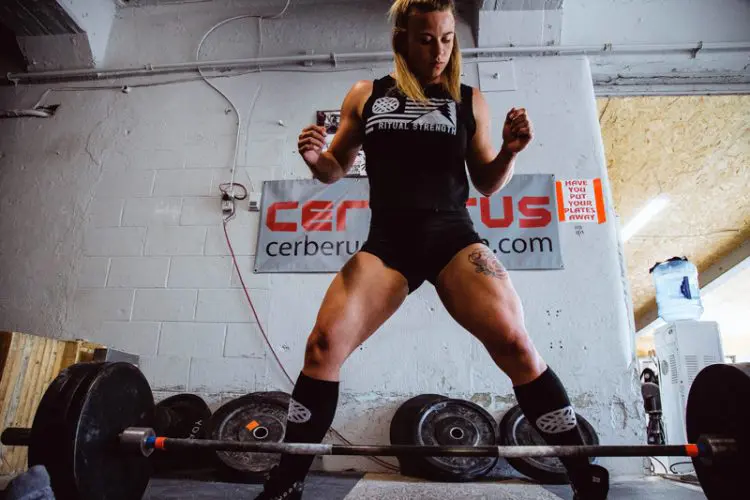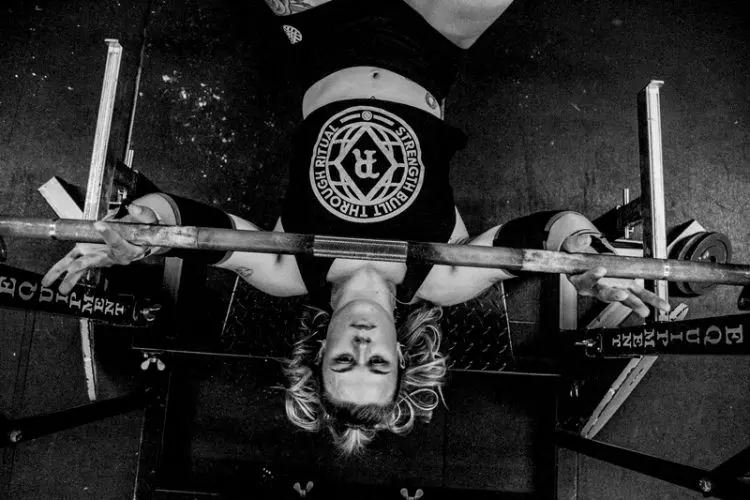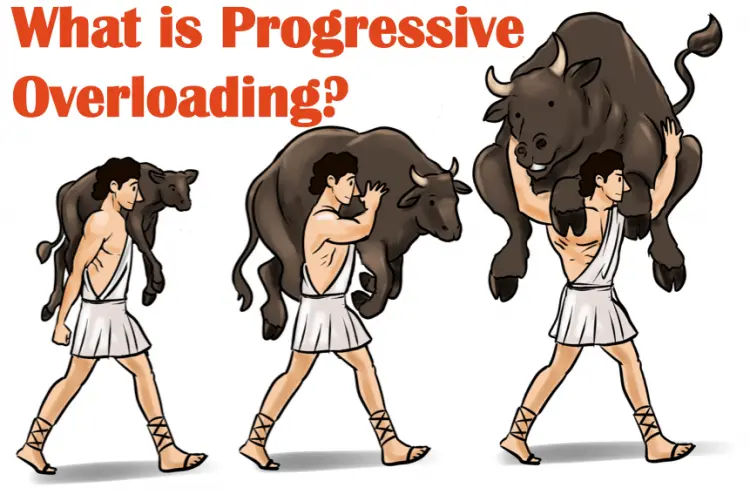If you are new to powerlifting, training can be daunting. If you don’t have a coach, it can be difficult to know where to start and how to create effective workouts that yield results.
However, powerlifting training does not need to be complicated, particularly if you’re a beginner.
This article will cover the basics of powerlifting training as well as provide two workout programs that you can use to build strength and performance.
Powerlifting Overview
Before beginning, let’s consider the sport of powerlifting. If you weren’t already aware, powerlifting is a strength sport that tests your deadlift, squat, and bench press.
The goal with each exercise is to lift the greatest amount of weight that you possibly can. With each exercise, you will be given three attempts.
Level Up Your Fitness: Join our 💪 strong community in Fitness Volt Newsletter. Get daily inspiration, expert-backed workouts, nutrition tips, the latest in strength sports, and the support you need to reach your goals. Subscribe for free!
The maximal amount of weight that you lift for each exercise will be recorded and tallied together.
Let’s say, for example, you lift 300lbs for the deadlift, 250lbs for the squat, and 175lbs for the bench press, your total score will be 725lbs.
Key Components of Powerlifting Training
There are a number of factors that can impact your powerlifting performance, however, none are more significant than your pre-competition training.
Following a powerlifting-specific and progressive strength training program in the lead up to the competition is crucial if you want to be competitive and place well.
But what exactly does this mean?
This section will run through the key components of powerlifting training that all training programs should incorporate.
The Three Powerlifts
All of the best powerlifting programs will revolve around the three powerlifts – the deadlift, squat, and bench press – and their variations.
However, it’s not just powerlifting programs that focus on these three movements. All of the best strength training programs tend to incorporate these three exercises or their variations.
Ultimately, if you want to get strong, these three lifts should be the foundation of your training as they will facilitate improvements in full-body strength.
Often, these exercises are categorized as upper and lower body exercises. For example, the squat is a leg exercise, the deadlift is a back exercise, and the bench is a chest exercise.
However, when you consider each lift, it should become clear that they are really full-body exercises.
With the squat, although it is the quads and the glutes that are the primary movers in the squat, a range of muscles in the core, such as the erector spinae, isometrically contract to maintain balance and stability (1).
Similarly, with the deadlift, the glutes and low back muscles are responsible for extending the hips. However, an array of muscles in the upper body must also contract to prevent the spine from rounding.
Finally, in the bench press, lifters should drive their feet into the floor to activate muscles in the lower body. Once again, this will help to provide stability and facilitate an efficient press.
Therefore, whether your goal is to perform well in powerlifting competitions or to generally improve your strength, your training should first and foremost focus on these lifts.
Primaries and Secondaries
Any decent strength training program will use primary and secondary exercises.
As the names suggest, primary exercises are the foundational exercises of the program – in this case the deadlift, squat, and bench press.
Secondary exercises are predominantly used to facilitate performance with your primary lifts.
For example, you may wish to use the lunge as an accessory exercise to help develop your squat. Similarly, you could use the hip thrust for the deadlift and the chest fly for the bench.
Secondary exercises can also be used to work on any weaknesses, eliminate strength imbalances, and increase overall training volume.
Maximal Lifting For Strength Development
Research on strength training is clear. Heavy lifting for low reps (typically between one and five) is best for strength development (2).
Keeping this in mind, it would therefore make sense to prioritize exercises that allow you to lift the greatest amount of weight.
It should come as no surprise that the big three powerlifts top the list once again. When it comes to heavy lifting, there are few exercises that compare to these three.
Considering that the muscles in the legs are larger and more powerful than the upper body muscles, you will lift the greatest amount of weight with the deadlift and squat.
Although you will typically lift less with the bench press, when it comes to “upper” exercises, the bench press is the exercise that will typically allow you to lift the most weight.
Outside of the powerlifts, you may wish to add in other compound exercises that allow for heavy lifting. These may include exercises such as the hip thrust, bent row, and overhead press.
Progressive Overload
One of the most important components of any training program is progressive overload. Without progressive overload, your body will fail to make significant strength adaptations.
Progressive overload simply involves gradually increasing training intensity over time. The most common method of doing this is to simply increase the amount of weight lifted.
However, in some instances where adding more weight may not be possible, you can also increase the intensity by adding reps, reducing rest times, and using advanced training methods such as supersets.
Level Up Your Fitness: Join our 💪 strong community in Fitness Volt Newsletter. Get daily inspiration, expert-backed workouts, nutrition tips, the latest in strength sports, and the support you need to reach your goals. Subscribe for free!
Gradually overloading the muscles through progressive overload forces the body to change and increase in strength (3).
If you fail to increase the intensity, the body will become accustomed to strength training and adaptations will gradually slow and cease.
Training Structure and Frequency
There are a number of ways to structure your strength training. Commonly used training structures include:
- Full-Body Training
- Push, Pull, Legs
- Five-Day Split
Ultimately, as a beginner, the training structure that you use is not hugely significant as it is likely that the majority of training structures will lead to substantial improvement of the deadlift, squat, and bench.
However, as you become more highly conditioned, it may become more important.
For example, if you find that your squat is lagging behind your deadlift and bench press, it may be beneficial to utilize a training structure that involves performing squats and squat variations more regularly.
In relation to training structure, you must also consider training frequency. As a beginner, often less is more as the body does not require a great frequency in order to make significant adaptations.
For beginners, training three times per week is recommended (4).
Once again, however, as you become more highly conditioned, you may find that you have to increase training frequency.
Typically, intermediate to advanced powerlifters train anywhere between three to six times per week.
Powerlifting Training Programs For Rapid Strength Gains
The following training programs are designed to allow you to make the best progress possible in the shortest time possible.
Powerlifting Program #1
The following workout program utilizes three full-body workouts per week to bring about rapid improvements in strength.
The training structure used in this program means that each workout focuses on just one big lift – either the squat, deadlift, or bench press.
Because heavy lifting is best for strength development, you are to perform heavy sets of three reps with your primary lifts.
Once you have completed this, you are then to move onto a number of secondary exercises to help increase training volume and facilitate an improvement in strength.
These secondary exercises use a higher rep range than the primary lifts to increase total training volume and facilitate improvements in strength.
Workout #1
| Exercise | Training Volume |
| Barbell Back Squat | 5 sets x 3 reps |
| Dumbbell Hip Thrust | 4 x 8 |
| Dumbbell Incline Bench Press | 4 x 8 |
| Cable Ab Crunch | 4 x 10 |
| Dumbbell Hammer Curl | 4 x 10 |
Workout #2
| Exercise | Training Volume |
| Barbell Bench Press | 5 sets x 3 reps |
| Dumbbell Front Squat | 4 x 8 |
| Dumbbell Shoulder Press | 4 x 8 |
| Cable Pallof Press | 4 x 10 |
| Dumbbell Rear Delt Fly | 4 x 10 |
Workout #3
| Exercise | Training Volume |
| Barbell Deadlift | 5 sets x 3 reps |
| Dumbbell Walking Lunge | 4 x 8 |
| Dumbbell Chest-Supported Row | 4 x 8 |
| Cable Woodchopper | 4 x 10 |
| Dumbbell Tricep Extension | 4 x 10 |
Powerlifting Program #2
There are many similarities between programs one and two in terms of exercise selection and training volume. The only difference between the two is training structure.
While the previous program focuses on full-body workouts, program two used PPL (or push, pull, legs).
As the name suggests, the workouts focus on particular exercises.
Workout one focuses on all pushing exercises, workout two utilizes all pulling exercises, while workout three prioritizes mostly leg-based exercises.
As mentioned, either training structure can be used to effectively increase strength. However, some may prefer the following structure:
Workout #1 – Push
| Exercise | Training Volume |
| Barbell Bench Press | 5 sets x 3 reps |
| Dumbbell Shoulder Press | 4 x 8 |
| Dumbbell Incline Bench Press | 4 x 8 |
| Cable Pallof Press | 4 x 10 |
| Dumbbell Tricep Extension | 4 x 10 |
Workout #2 – Pull
| Exercise | Training Volume |
| Barbell Deadlift | 5 sets x 3 reps |
| Dumbbell Chest-Supported Row | 4 x 8 |
| Cable Woodchopper | 4 x 8 |
| Cable Ab Crunch | 4 x 10 |
| Dumbbell Hammer Curl | 4 x 10 |
Workout #3 – Legs
| Exercise | Training Volume |
| Barbell Back Squat | 5 sets x 3 reps |
| Dumbbell Hip Thrust | 4 x 8 |
| Dumbbell Front Squat | 4 x 8 |
| Dumbbell Walking Lunges | 4 x 10 |
| Dumbbell Rear Delt Fly | 4 x 10 |
Training Program Guide
Following either of these training programs will undoubtedly lead to significant improvements in strength and performance.
These workouts have been designed so that they can be cycled on a weekly basis. With each week that passes you should look to apply progressive overload.
As highlighted earlier, this is primarily done by adding weight to each exercise.
As a beginner, you may find that you can increase the weight by 10-20lbs each week with your squat and deadlift.
With the bench press and smaller secondary exercises, you will be able to add less weight and should aim for around 5-10lbs each week.
In terms of program duration, you can cycle these workouts for as long as possible providing that you are consistently able to add weight to your big lifts.
Most beginners will find that they can do this for six to eight weeks before things begin to plateau.
At this stage, you may need to move onto a more advanced program that will challenge the body and force it to continue adapting.
Read also:
- Improve Your Powerlifting Performance With The Cube Method
- Enhancing Squat Performance With The Smolov Squat Program
- Developing Strength With The Powerlifting Bench Pyramid Program (Spreadsheet)
- The 12 Best Strength Training Exercises for Runners
Final Word
Even if you are not planning on entering a powerlifting competition, powerlifting training is one of the best methods for comprehensively improving strength.
Training does not have to be complex or intricate. Providing your training is consistent, focuses on the three powerlifts, and progresses gradually, it is hard to go wrong!
References:
1- Martín-Fuentes, Isabel; Oliva-Lozano, José M.; Muyor, José M. (27 February 2020). “Electromyographic activity in deadlift exercise and its variants. A systematic review“.
2- Schoenfeld, Brad J.; Contreras, Bret; Vigotsky, Andrew D.; Peterson, Mark (1 December 2016). “Differential Effects of Heavy Versus Moderate Loads on Measures of Strength and Hypertrophy in Resistance-Trained Men“. Journal of Sports Science & Medicine.
3- Lorenz, Daniel S.; Reiman, Michael P.; Walker, John C. (2010-11). “Periodization“. Sports Health. 2 (6): 509–518.
4- Ochi, Eisuke; Maruo, Masataka; Tsuchiya, Yosuke; Ishii, Naokata; Miura, Koji; Sasaki, Kazushige (2 July 2018). “Higher Training Frequency Is Important for Gaining Muscular Strength Under Volume-Matched Training“. Frontiers in Physiology.











